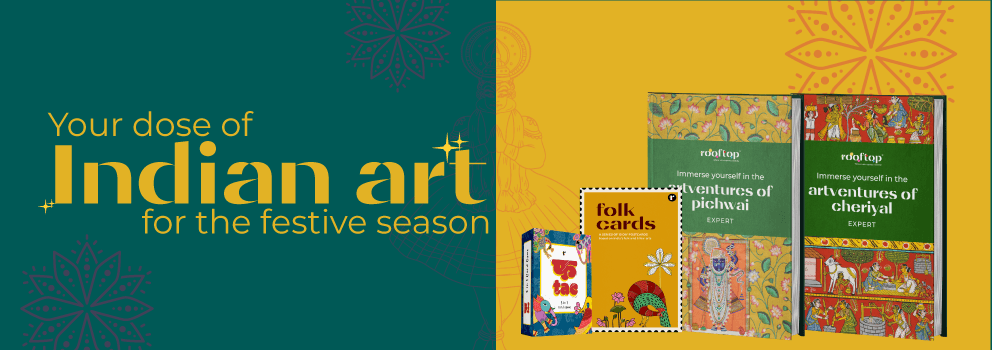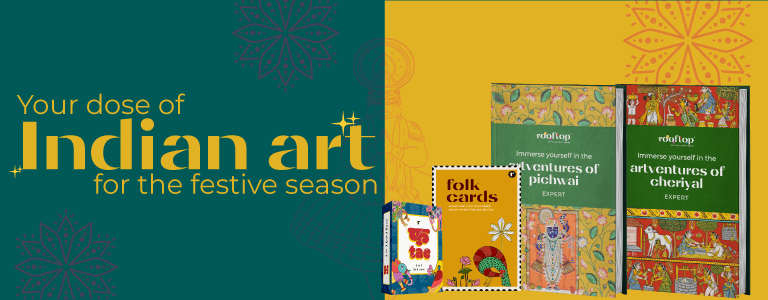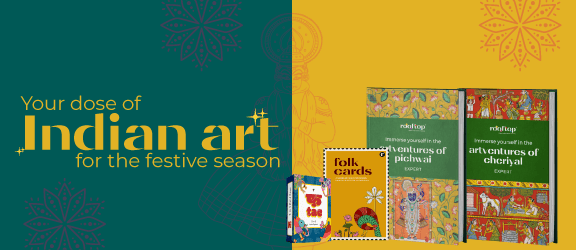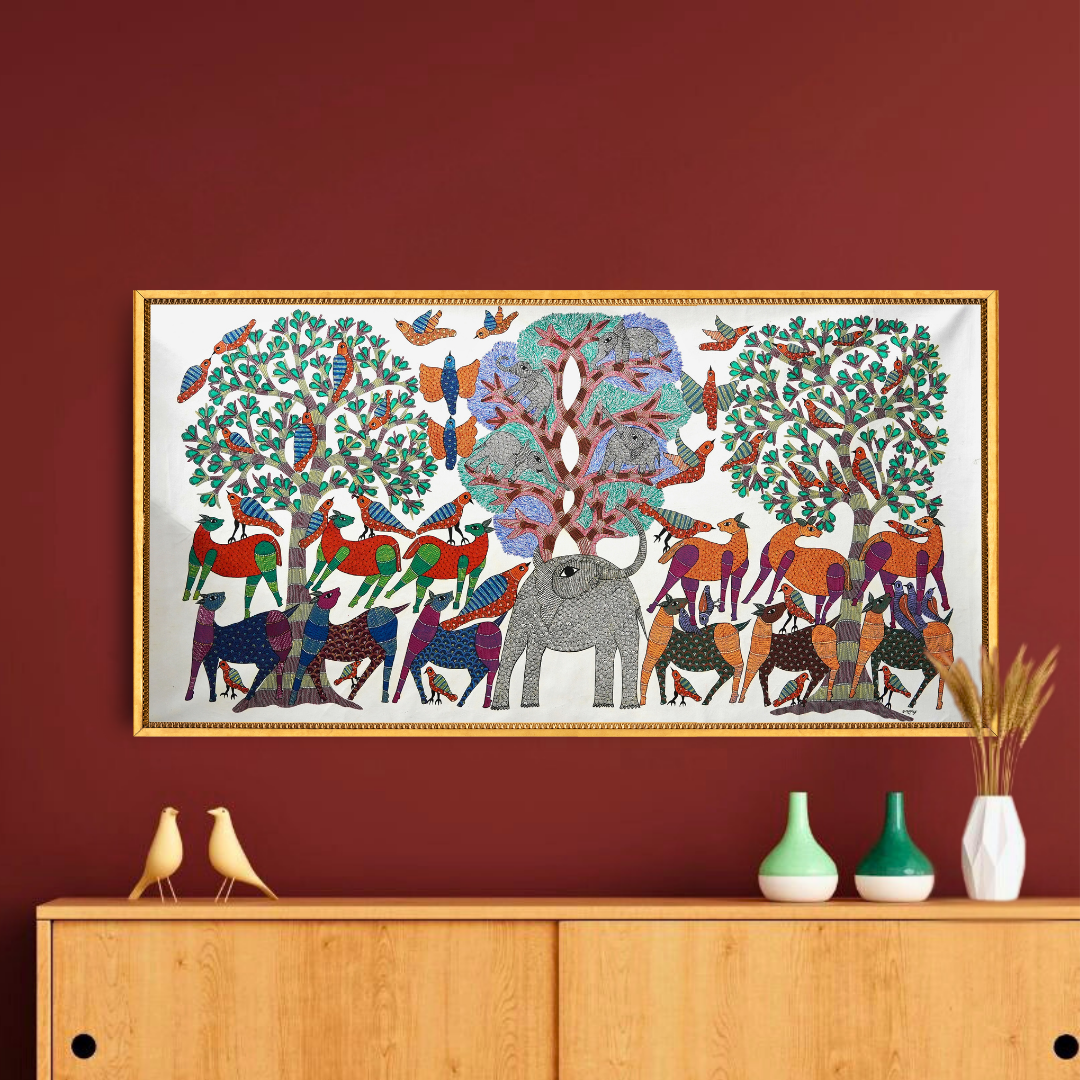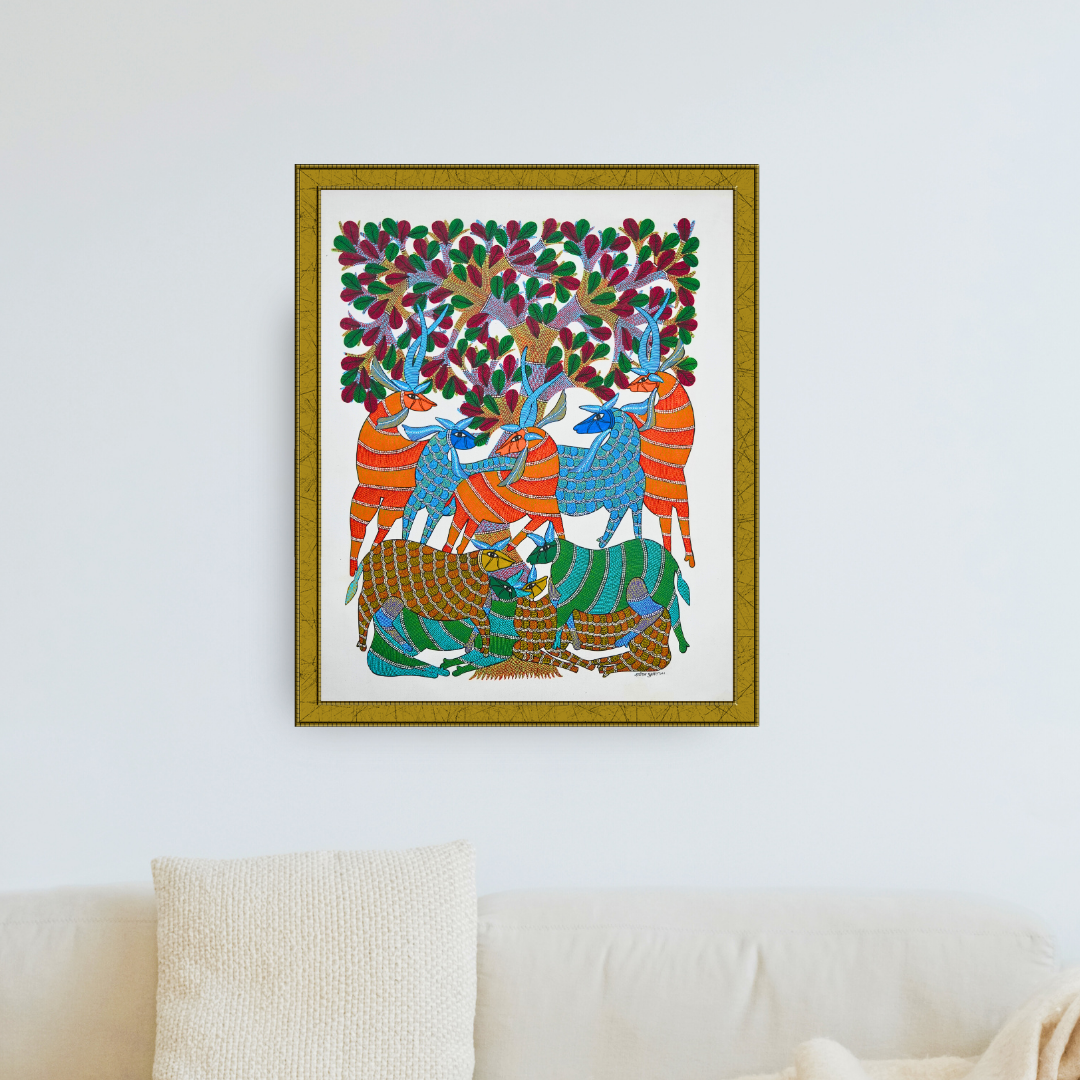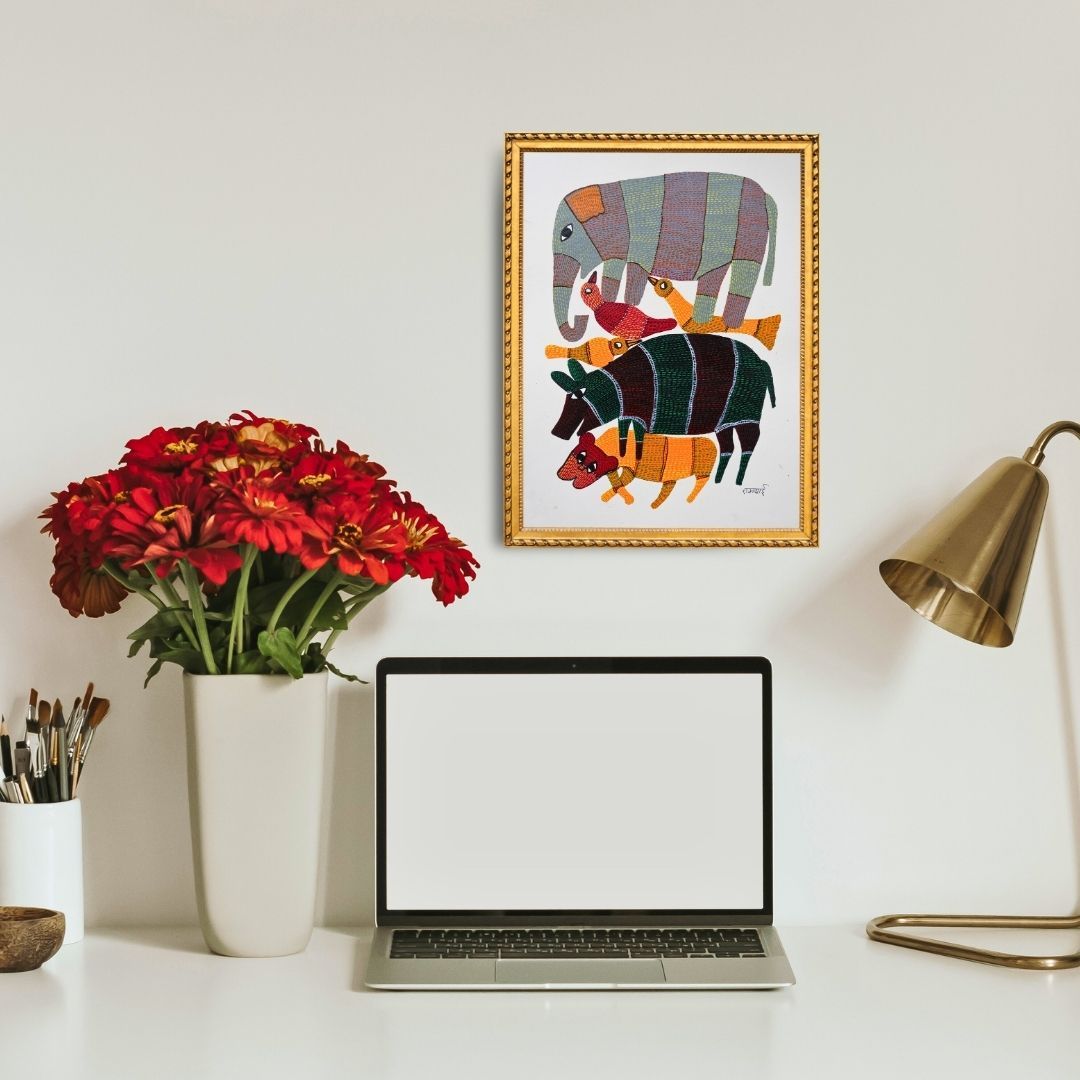Your Cart
Shop Gond Handmade Paintings Online
Discover Gond Art Painting at Rooftop
Nearly 13 million people identify as Gond, making them one of India’s largest tribal communities. Their roots stretch across Madhya Pradesh, Chhattisgarh, Maharashtra, Andhra Pradesh, and Odisha. But what carries their name beyond the heartland is not only history or numbers.
It is their art… a tradition that turns daily life and ancient myth into rhythm, colour, and pattern. This is the world of Gond art painting.
At Rooftop, you will find Gond canvas paintings created by artists who belong to this community. Each work is a continuation of stories that were once drawn on mud walls and now live on paper and canvas.
The Gond Community and Its World
The word “Gond” comes from the Dravidian word for “green mountain.” The name reflects their bond with forests, rivers, and fertile lands. Farming shaped their days, while myths and songs carried their memories. The Pardhan Gonds, especially, became known for music and painting.
Art was never decoration. It was a way to preserve myths, honour the forest, and give shape to the unseen. Stories that others kept in books, the Gonds painted in patterns that still move with life today.
The Origins of Gond Painting
Gond painting traces its roots back thousands of years, with motifs connected to the prehistoric cave art of Bhimbetka. For centuries, Gond women decorated mud walls and floors during weddings and festivals. These ritual designs, known as digna, were drawn with natural colours to invite prosperity.
The surface changed with time. Mud walls gave way to handmade paper and canvas. But the purpose stayed the same… to retell myths of spirits, ancestors, and the forest so they would never be forgotten.
Style and Symbolism in Gond Art
When you look at a Gond tribal art painting, you notice more than colour. You see its grammar of dots, lines, and patterns.
Vibrant palette: once made with soil, charcoal, flowers, and plant sap… now also with acrylics on canvas. Dot and line work: fills that create rhythm, motion, and depth. Nature as subject: tigers, deer, birds, and trees appear not as decoration but as carriers of myth. Tree of Life: a recurring symbol of creation, community, and continuity.
This is why a Gond folk art painting never feels still. Even a tree looks alive, swaying through patterns that pulse with movement.
From Jangarh Kalam to Today
The turning point came in the 1980s, when Jangarh Singh Shyam, a Pardhan Gond artist from Patangarh, painted on paper and canvas for the first time. His style, now called Jangarh Kalam, carried Gond art into museums and international exhibitions.
Jangarh’s work reimagined myths with bold colours and modern form. After him, artists like Bhajju Shyam, Durga Bai, and Venkat Raman Singh Shyam continued the legacy, each expanding Gond art for a global audience.
In 2025, Gond painting received a Geographical Indication (GI) tag, recognising it as the protected cultural heritage of Madhya Pradesh. This ensures that the tradition is respected and that the artists’ rights are safeguarded.
Why Collect Gond Paintings From Rooftop
Gond art is more than colour and pattern. It is a worldview where every creature and tree is sacred. Owning a Gond painting means holding part of that vision in your home.
At Rooftop, each Gond art painting is sourced directly from tribal artists. Every piece carries provenance and authenticity, ensuring your purchase supports the people who keep this tradition alive.

